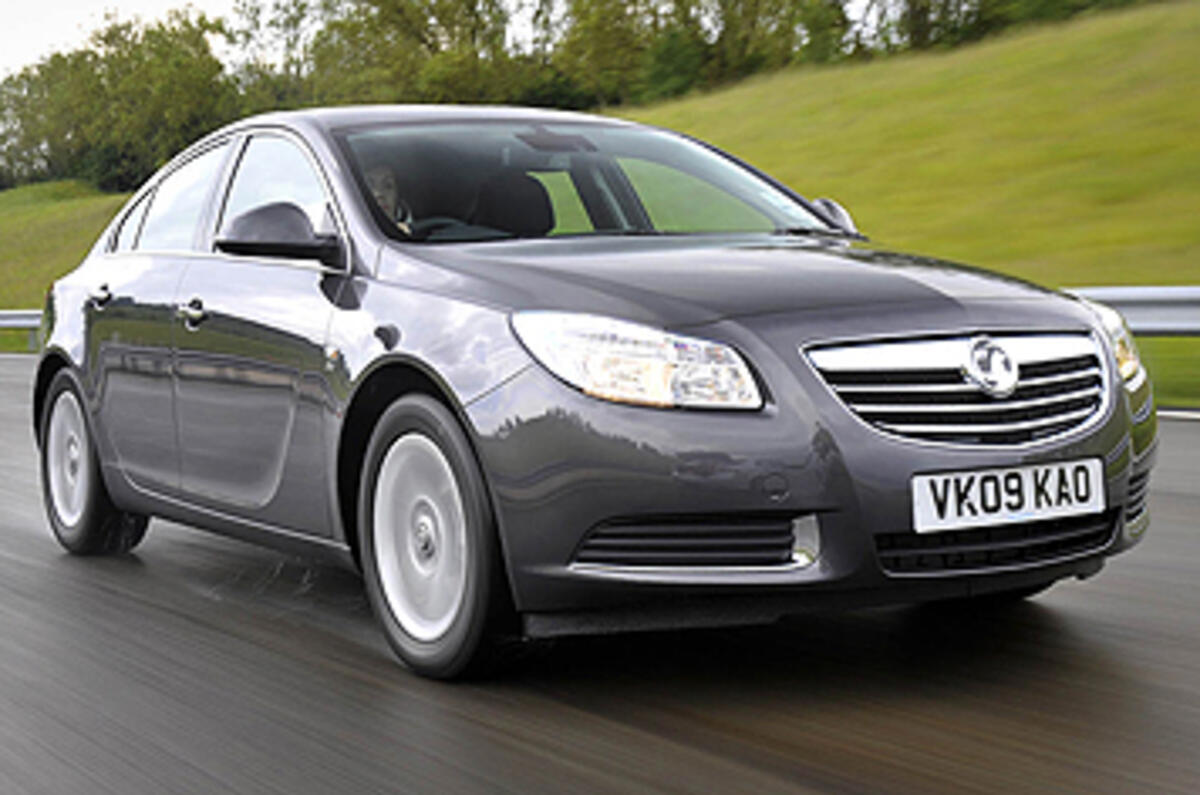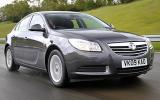What is it?
Very possibly the car your employer’s fleet manager has been waiting for: this is the new, most frugal, lowest carbon version of Vauxhall’s Insignia.
Until now there have been only two diesel versions of Luton’s new and much-improved mid-sized saloon, powered by the same 2.0-litre four-pot engine in low (128bhp) and high (158bhp) states of tune. The Ecoflex brings the tally of oil-burners up to three; a fourth will be added later this year in the shape of a 188bhp 2.0-litre twin-turbo diesel.
Most low-CO2 versions of mainstream cars feature the smallest and most feeble engine in the range, but the Insignia Ecoflex is different. It runs the 158bhp version of Vauxhall’s 2.0-litre diesel because, according to the maker’s claims, it’s no less frugal and no more given to producing carbon dioxide than the 128bhp version.
In order to bring about the economy and emissions gains, GM Europe has tweaked the Insignia’s underbody aerodynamics and lowered it on its wheels by 10mm, bringing the car’s coefficient of drag down to 0.26. The Ecoflex runs on Michelin Primacy low-resistance rubber, and also has taller first and second gear ratios and a higher final drive.
What’s it like?
As impressive as the regular 158bhp Insignia in most ways, and even more so in one.
We tested the car on the undulating Millbrook Alpine Route, and 90 per cent of the time couldn’t discern it from its closest rangemate. All of the Insignia’s transferable virtues are here, including a well-appointed, classy and comfortable cabin, better-than-average passenger accommodation and some new-found good looks.
Performance feels stronger than you’d expect from an economy special, and gives credit to Vauxhall’s claim that the car is only a couple of tenths slower to 62mph than a standard 2.0-litre CDTi 160.
In normal conditions there’s enough mid-range punch for fairly swift overtaking. Only climbing the Hill Route’s steepest slopes was the car’s longer gearset evident, and only then in a little sluggishness in the upper reaches of the rev range.
Roadholding feels all-but-indiscernible from that of any other Insignia. That may be damning with faint praise in as much as the Vauxhall’s not the stand-out act in the class dynamically.
It just doesn’t quite steer precisely enough, ride subtly enough or handle deftly enough to bear comparison with a Ford Mondeo. But viewed in the right context, relative to Insignias with stiffer springs and a more overt sporting agenda, the Ecoflex is actually a bit of a triumph for Vauxhall.
While you expect compromised grip to come from the car’s low-resistance tyres, you actually get all the traction and lateral purchase you need. There’s noticeable tyre squeal in the dry as the tyres run out of adhesion sooner than performance tyres would, but the difference won’t matter during most road driving.
And considering how insignificant those compromises of performance and roadholding are, this car’s excellent economy and low CO2 seem all the sweeter.
Vauxhall claims that the car will return 54.7mpg on the combined cycle, going 10 per cent further between fill-ups than a standard 2.0-litre CDTi.





















Join the debate
Add your comment
Re: Vauxhall Insignia Ecoflex SE
I hired an Insignia over the weekend. It was a Diesel ,don't know in what state of tune, but it was competent on the Motorway but so so noisy around town.Rep fonder it is. It's strangley handsome from some angles and makes the Mondeo look dated IMHO.Re: Vauxhall Insignia Ecoflex SE
"Where's your wife?"
"Oh, that's her going sideways on her third lap of that roundabout - takes her forever to get back from Tesco nowadays, and plays hell with the groceries in the boot"
Re: Vauxhall Insignia Ecoflex SE
That wasn't really part of the plan, no. I think she saw through my plan for a weekend car to get over the boredom of the Vectra company car I had at the time.